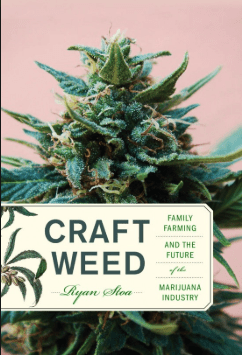New Wine in Old Skins: Cannabis Branding and French Wine Appellations
- David A. Guba Jr.
- Dec 4, 2018
- 3 min read
Updated: Aug 29, 2023
Editor’s Note: Today’s post comes from contributing editor Dr. David A. Guba, Jr., of Bard Early College in Baltimore. Today he explores the potential for an appellation system for “craft marijuana,” which hopes to protect and promote cannabis grown by local farmers in places like the Emerald Triangle in California. Could American pot recreate an appellation system like France has for its wines? Read on and see!
As cannabis legalization sweeps across the United States, producing $8.5 billion in sales in 2017 and a projected $40-50 billion by the end of 2019, growers and distributors in the nation’s 36 states and territories where cannabis is to some degree legal are clamoring for ways to position their products above the rest.[1] Because the vast majority of legal cannabis in the U.S. is grown in controlled, indoor environments, competition among cannabis producers and sellers for optimal “bag appeal” largely has centered on mass producing strains with high THC and CBD percentages and non-flower products, such as concentrates, edibles, and tablets, that mitigate the health hazards of consumption.


A quick perusal of the history of wine likewise paints a hopeful picture for the adoption of an appellation system in the American cannabis market. Thomas Brennan’s Burgundy to Champagne: The Wine Trade in Early Modern France revealed that, as the international demand for wine expanded in the 18th century, French wine producers improved their product, and specifically their bottling techniques, to better compete on a broadening export market.[6] In When Champagne Became French: Wine and the Making of a National Identity, Kolleen M. Guy carries the story into the 19th and early 20th centuries, when wine producers of the Marne organized into the Fédération des syndicats viticoles de la Champagne to regulate the region’s sparkling wine and market and sell it as a luxury commodity and cultural symbol of bourgeois France.[7] Joseph Bohling’s newly published book, The Sober Revolution: Appellation Wine and the Transformation of France, finishes the story by detailing the development of the state-sponsored Institut National des Appellations d’Origine (INAO), created in 1935 to help promote winemaking in the Hexagon in the face of competition from Algeria by rebranding wines from Burgundy, Bordeaux, and Rhône as elite wines and selling them on the international market.[8] During all three milestones in the history of French wine, the above historians argue, the expansion of appellation systems led to net increases in the international prestige and sales of French wines.
It probably is best not to get too far ahead of ourselves. The official roll-out of the CalCannabis Appellations Program is nearly two years off. And, as Ryan Stoa pointed out, “Until marijuana is legal at the federal level, a national appellation system is impractical.” But if the appellation system does prove successful and stimulates high-end cannabis sales in California and cannabis tourism in the Emerald Triangle, then it might offer a way forward in debates within the cannabis industry over purity, intellectual property, and big business.
NOTES:
1.) Thomas Pellechia, “In 2017 And Beyond, U.S. Enjoys the Highest Legal Cannabis Market Share Worldwide,” Forbes (26 June 2018): [https://www.forbes.com/sites/thomaspellechia/2018/06/26/in-2017-beyond-u-s-enjoys-the-highest-legal-cannabis-market-share-worldwide/#7b607ec62d20].
2.) Poncie Rutsch, “Quality-Testing Legal Marijuana: Strong But Not Always Clean,” NPR (24 March 2015): [https://www.npr.org/sections/health-shots/2015/03/24/395065699/quality-testing-legal-marijuana-strong-but-not-always-clean].
3.) Amanda Chicago Lewis, “Inside the Battle to Accurately Label Pot,” RollingStone (29 November 2017): [https://www.rollingstone.com/culture/culture-features/inside-the-battle-to-accurately-label-pot-121185/].
4.) Justin Calvino quoted in Tom Hynes, “Justin Calvino is Hell-bent on Saving Craft Cannabis and the World,” MG: For the Cannabis Professional (2 November 2017): https://mgretailer.com/business/growing-horticulture/justin-calvino-is-hellbent-on-saving-craft-cannabis-and-the-world/
5.) Ryan Stoa, “Should we Regulate Cannabis Like Champagne? an Appellation System Similar to the One used for French Wine Could Protect Marijuana Growers and Consumers. Law Professor Ryan Stoa Explains.” Wall Street Journal (Online), Nov 15, 2018. https://www.wsj.com/articles/should-we-regulate-cannabis-like-champagne-1542296700.
6.) Thomas Brennan, Burgundy to Champagne: The Wine Trade in Early Modern France (Baltimore, MD: The Johns Hopkins University Press, 1997).
7.) Kolleen M. Guy, When Champagne Became French: Wine and the Making of a National Identity (Baltimore, MD: The Johns Hopkins University Press, 2003).
8.) Joseph Bohling, The Sober Revolution: Appellation Wine and the Transformation of France (Ithaca, NY: Cornell University Press, 2018).
